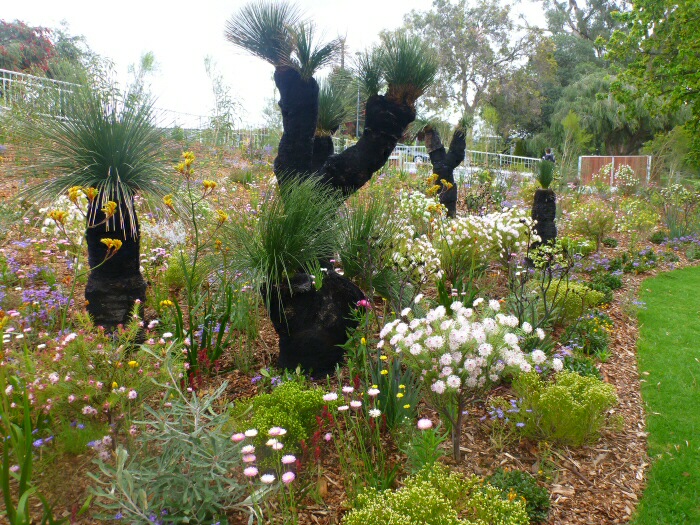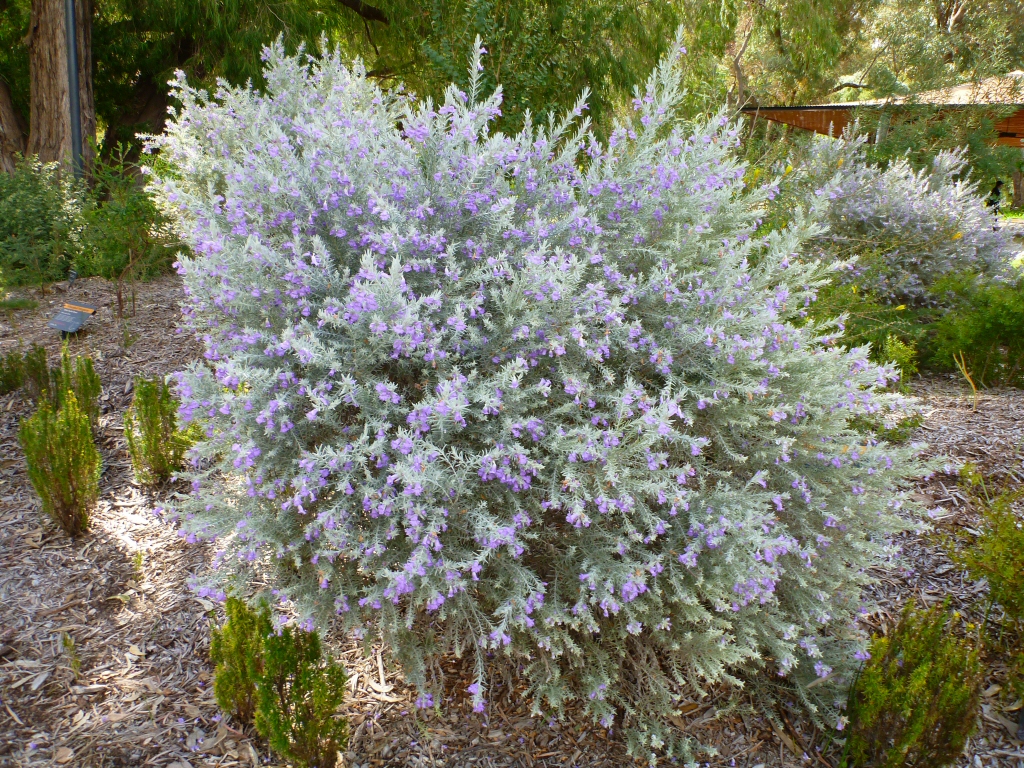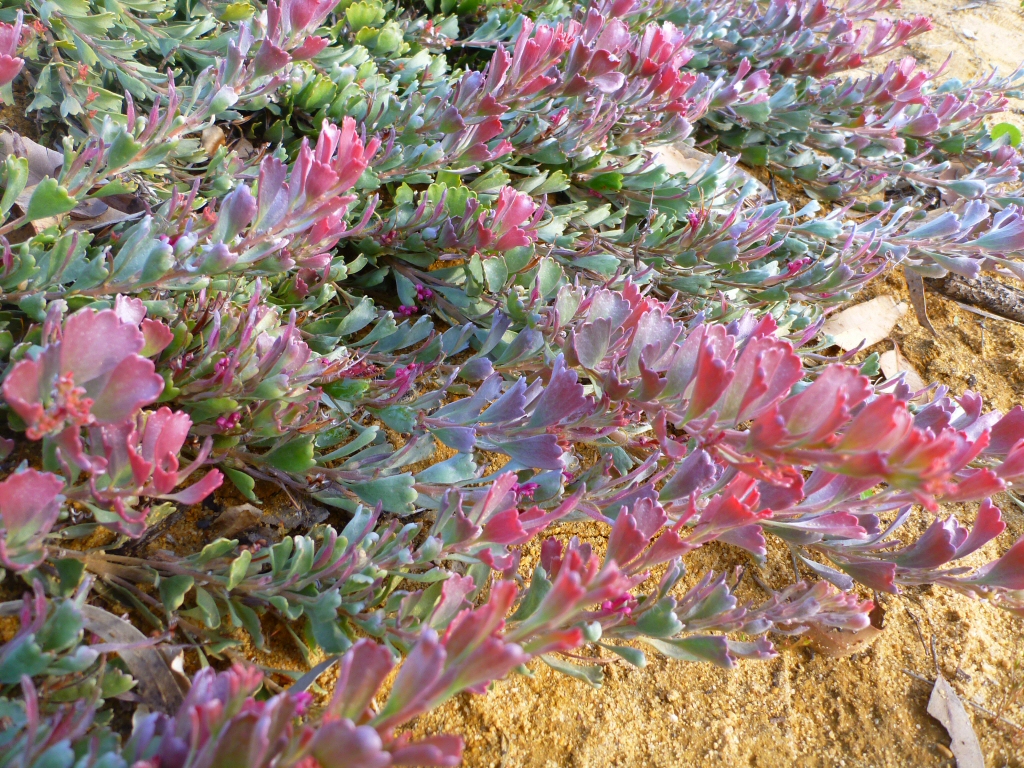CELEBRATE SPRING WITH NATIVE PLANTS
I’ve just finished a spring tour to Western Australia. I am constantly being reminded of how good, how tough, how diverse our Australian native plants are, and there is no better reminder than visiting WA in spring. So, I want to share some of the wonder of their wildflowers with you.
EXTREME GARDENING IN THE WILD
Regular newsletter followers will know how much I think natives and extreme gardening go hand in hand. This follows on from observing how nature does it, and how our Aussie plants have evolved to not only cope but to be able to thrive in our harsh conditions. In past newsletters I have shared with you how I have run the whipper snipper over kangaroo paws, set fire to a grass tree, and put some woody seed pods into the oven to release the seeds, all with great success. While travelling around in WA, I came across this beautiful example of how a great number of native plants have adapted to germinate after fire. This verge had been burnt a while ago- check out the super healthy and abundant Anigozanthos mangelsii-
WHICH WEST AUSTRALIAN PLANTS WORK WELL IN THE GARDEN?
Wandering around West Australia in spring is a visit to nature’s garden. Whether it’s a drive around on large highways or on the small country roads, a stop and a walk around is always a delight, with a smorgasbord of horticultural treasures on offer. After a visit, it’s tempting to want to replicate this natural beauty at home. But Western Australia’s growing conditions are as diverse as the range of plants, so before stocking up on plants that originate there, it is worth considering how well they will grow in your patch of the world.
The south west area of WA has a more mellow climate, so plants from this area can suit the more moderate climate areas of Sydney to Melbourne better than plants from more arid areas, which often need more heat, less humidity and better water drainage to avoid fungal problems. Plants from the drier areas will suit the less humid climate areas better, but can also perform well if some care is taken to situate them in raised beds, by areas of concrete which can store and radiate heat, or if they are considered as more temporary garden or potted plants. If you are willing to take the more temporary approach, then a whole world of amazing plants opens up to you. And if by chance you get the conditions right, your horticultural friends will be in awe of your plant skills! Some plants from the more arid areas are champions at making themselves at home in a wide range of places, such as the native succulents. Nurserymen have also been innovating with grafting, which means the average gardener can now grow some of the previously difficult plants. The flowering gums are now possible for East Coast gardens, as they are being grafted onto rootstock suitable for moister conditions, as are some of the amazing Eremophilas.
Of course, if you live in Western Australia, by observing the plants that naturally do well in your area, you can plant accordingly. But by all means experiment with ones that are outside your patch, as that is half the fun and challenge of gardening.
SOME WEST AUSTRALIAN NATIVES TO TRY
Here are some W.A. plants that are available in nurseries, from my own Gardening With Angus range of plants-
Adenanthos ‘Flat Out’– This is a beautifully coloured and sculptural plant from the south of Western Australia. Normally a bit more upright, ‘Flat Out’ has been selected for ground cover use. It likes a sunny spot and a well drained soil to be at its best, and is a real beauty if you have such a position.
Disphyma ‘Hot Stuff’– Disphyma are one of those plants from arid areas that are happy to make themselves at home in many different places. A brilliant native succulent, this will grow in most soil types, looks great in pots or as a superb groundcover. It will flower it’s head off in the warm months, and is so easy to grow. As an added bonus, it has edible leaves and fruit.
Anigozanthos flavidus Landscape series- The best known and most iconic plant from Western Australia would have to be the kangaroo paw. Most of the ones available in nurseries are the smaller hybrid paws, as people are attracted to and will buy the plant in the nursery that has a flower, overlooking ones that are not blooming. Anigozanthos flavidus comes from the more humid areas of south west WA, and can be found growing in quite wet areas as well as drier ones. This makes Anigozanthos flavidus, and its taller hybrids with the bright red A. rufus and the bright yellow A. pulcherrimus a great choice for a hardier kangaroo paw for landscaping. Savvy plant buyers can ask their nursery for them- rather than their smaller cousins, the tall paws will make a real garden statement. I have released three great colour forms in the Gardening With Angus range of plants- Landscape Orange, Landscape Yellow and Landscape Lilac. More colours will be released soon!
-

Anigozanthos flavidus 'Landscape Orange'
-

Kangaroo paw 'Landscape Lilac'
-

Anigozanthos flavidus 'Landscape Yellow'
Well, that’s it for this month. Get out into your garden, into the bush and into the nurseries to enjoy our great native plants.













